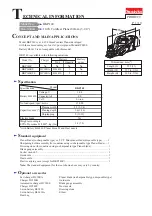
4
1. Channel Gain -
Adjusts the pre-fader volume for cleaner sound.
Reduce the channel gain if you notice the level indicators flashing
red.
2.
Mic Input Gain -
Adjusts microphone input level.
3.
Mic EQ -
The mic channel includes a two-band EQ with a range of
+10dB to -10dB.
4.
Channel EQ -
Adjusts the high, mid and low frequency levels of the
input channels for either making the treble or bass louder or to be
used as an effect.
5.
Input Fader -
Controls individual source levels (channels) in the mix.
6. Crossfader Curve -
The CUT setting allows the use of the
crossfader for quick cut in and out when scratching and mixing. The
FADE setting is used for longer segues, typically when mixing
between two beat-matched sources.
7. Crossfader
-
Used to mix the sound from both channels.
8. Mic
Input
-
Insert your ¼” microphone plug here.
9.
Headphone Input -
Insert your ¼” headphone plugs here.
10. Fader Start On/Off Switch -
When the unit has been connected to a
CD player using a control cable, this becomes the On/Off switch to
automatically start and stop the CD player while using the crossfader.
11. Level Indicators -
The dual LED indicators are used to indicate the
master output level of the Right and Left channels.
12. Channel Cue / Cue Pan -
Used to preview channel audio to your
headphones. Listen here before bringing up channel faders or
moving the crossfader.
13. Headphone
Level
-
Adjusts cue volume.
14. Master Level -
Controls the overall output level.
15. Input Toggle Switch -
Selects which source will be active based on
what you have connected to the rear panel input section (phono/line).
CONTROL OVERVIEW M.212
5
7
6
3
4
2
15
8
9
14
13
12
10
11
1
Содержание C.324
Страница 1: ...DIGIPAK PRO V4 USER MANUAL...


































